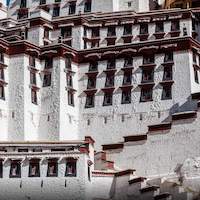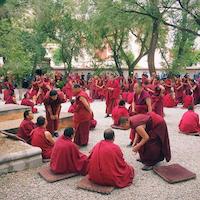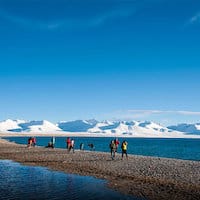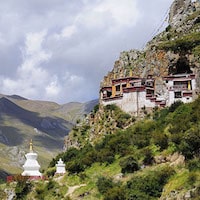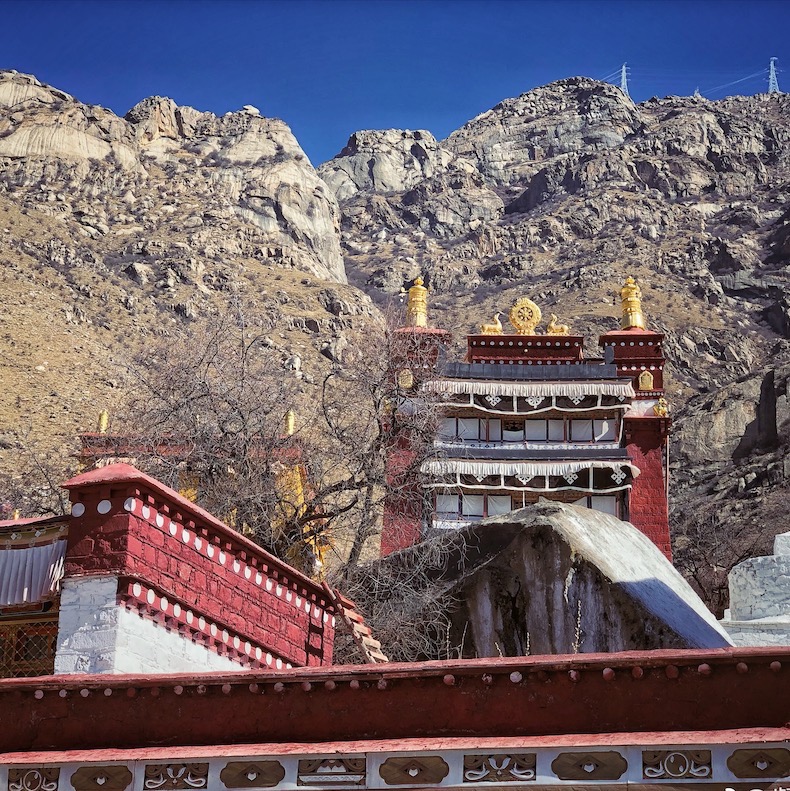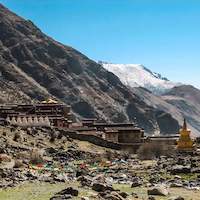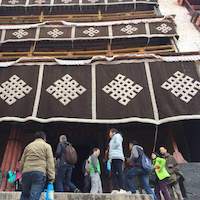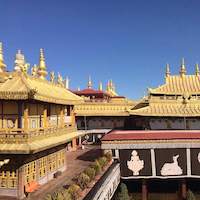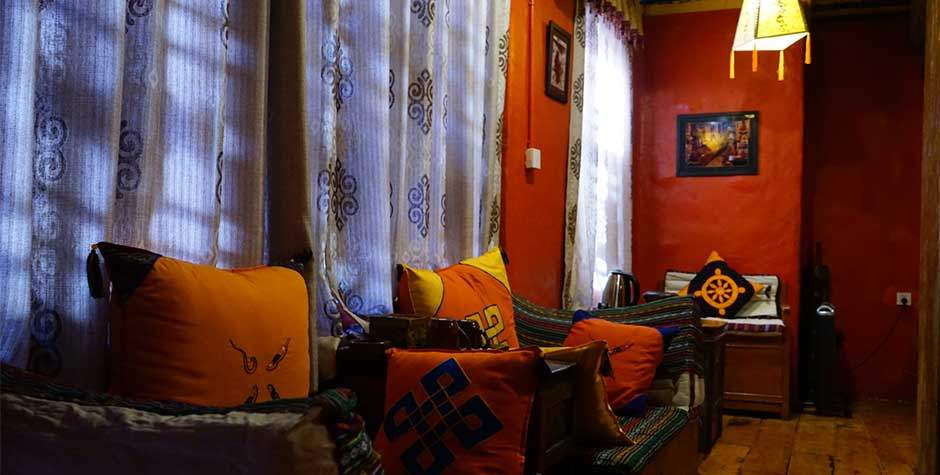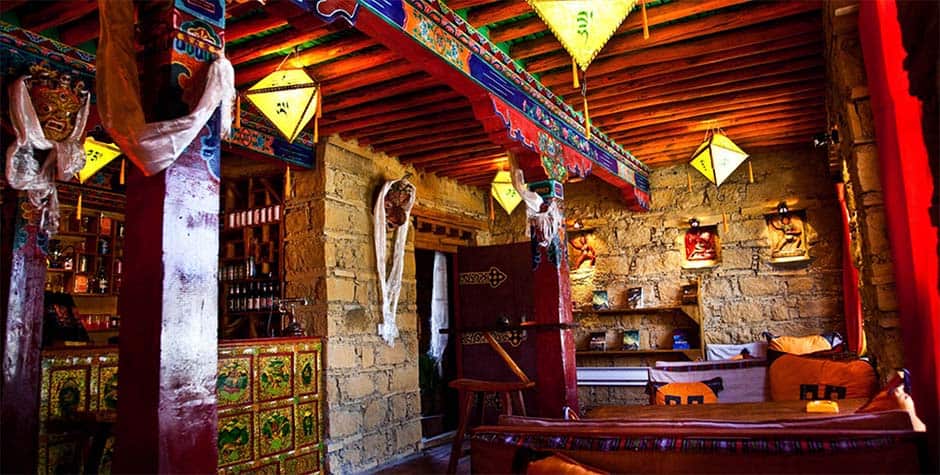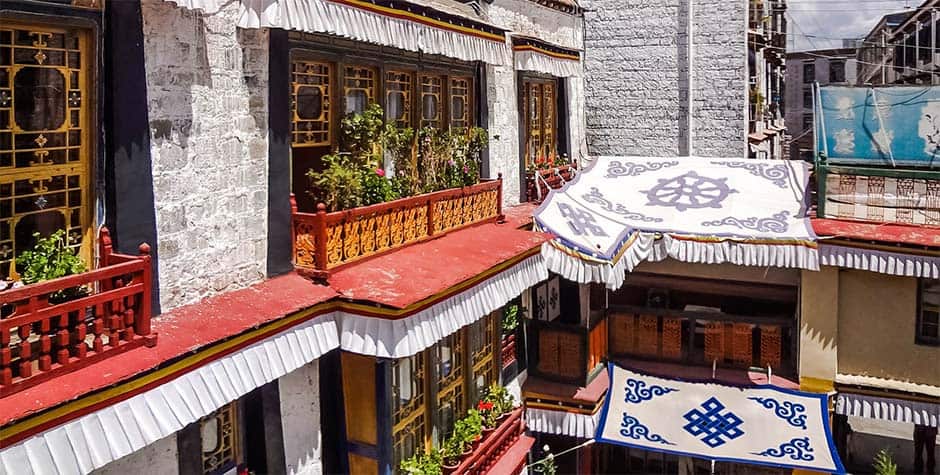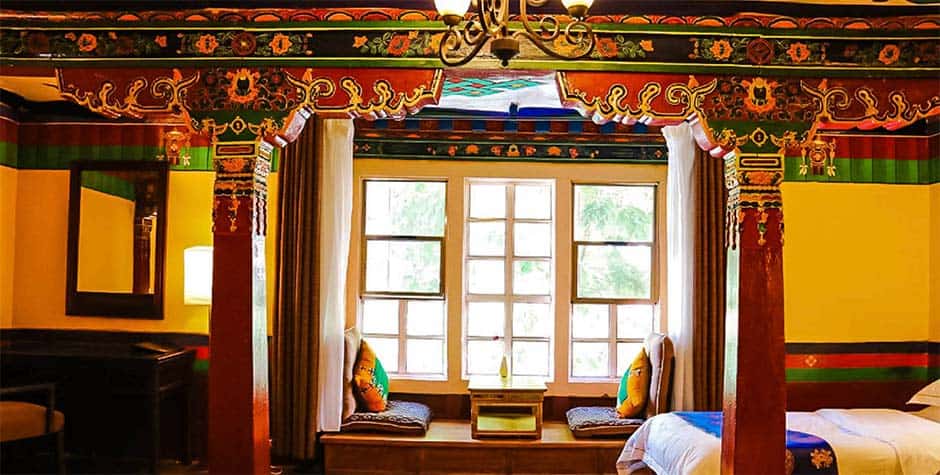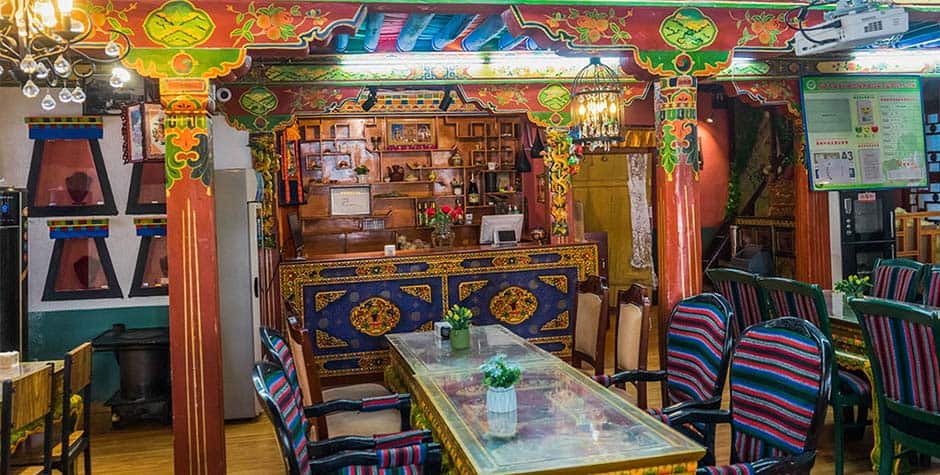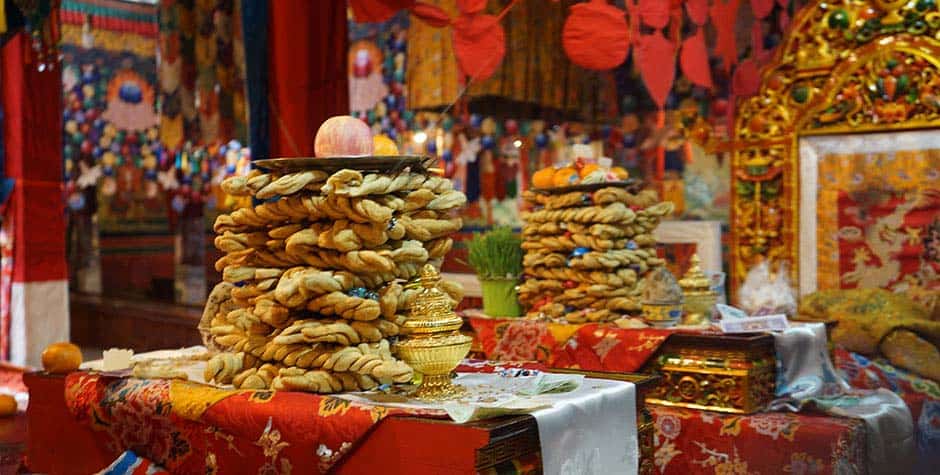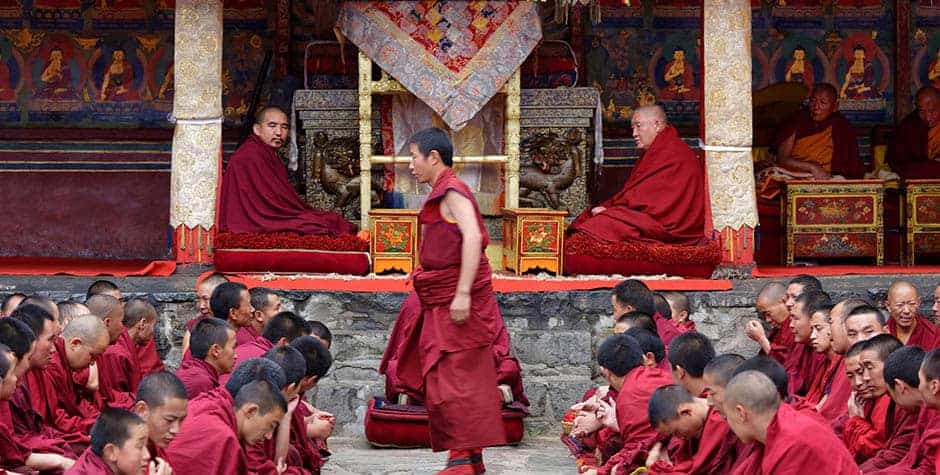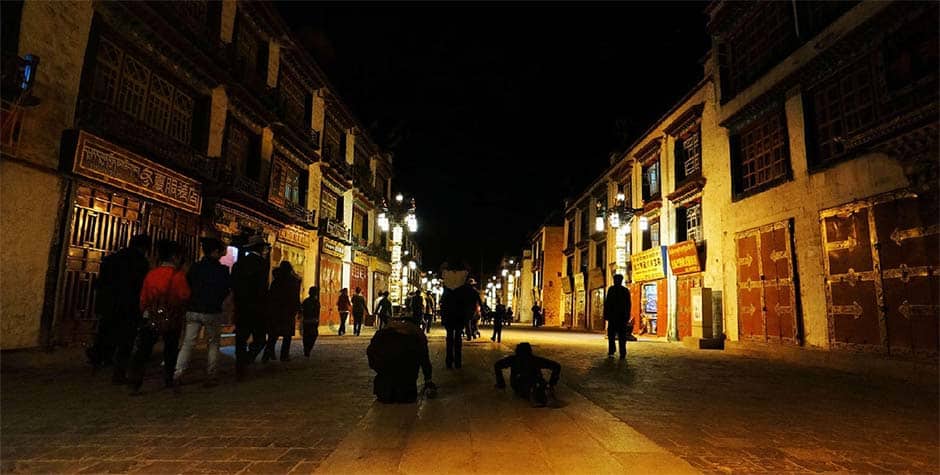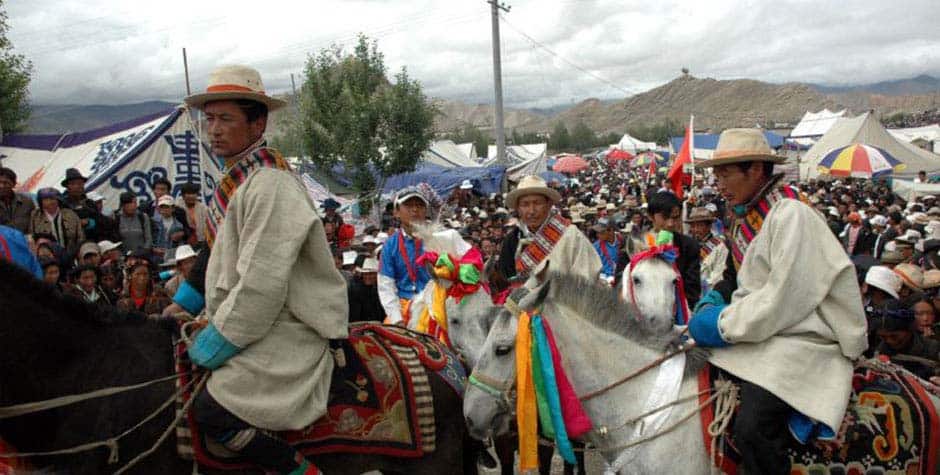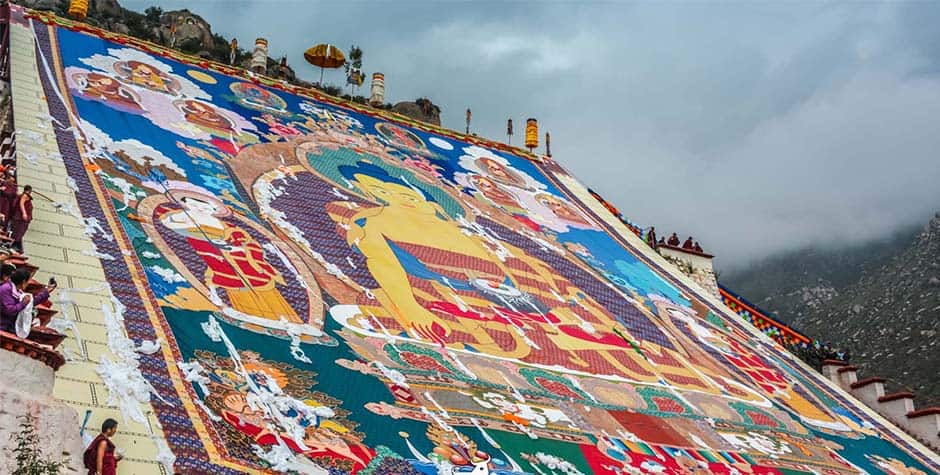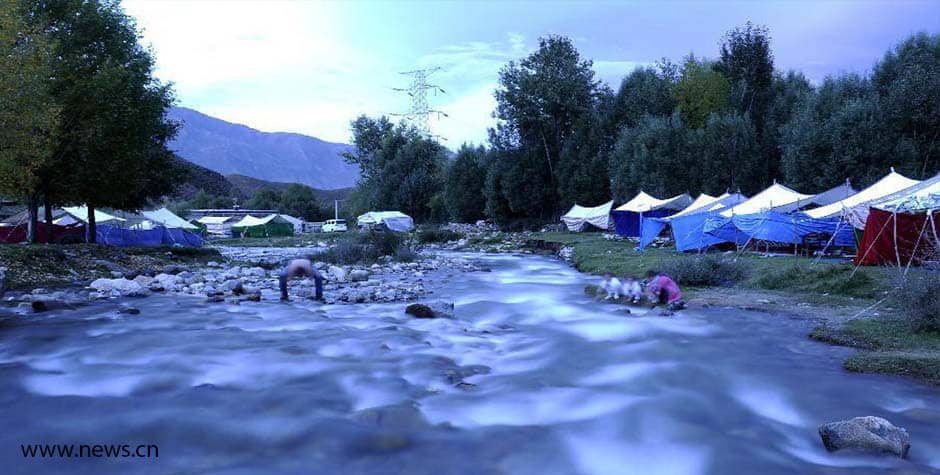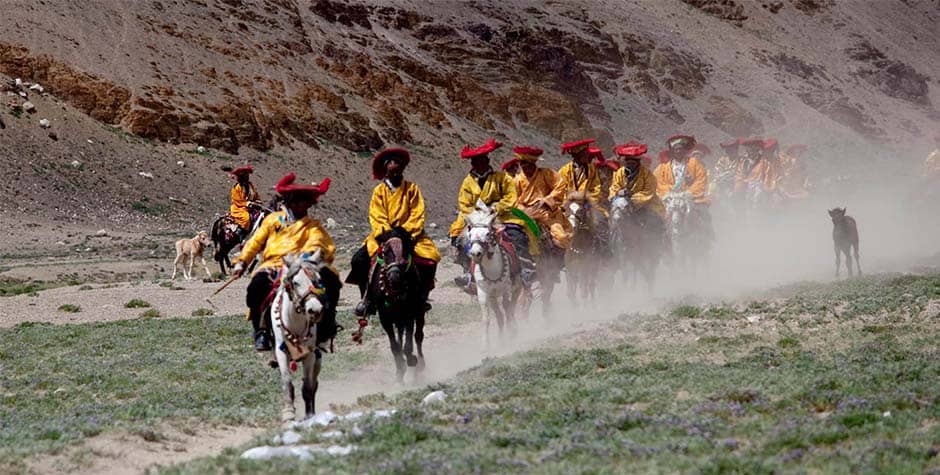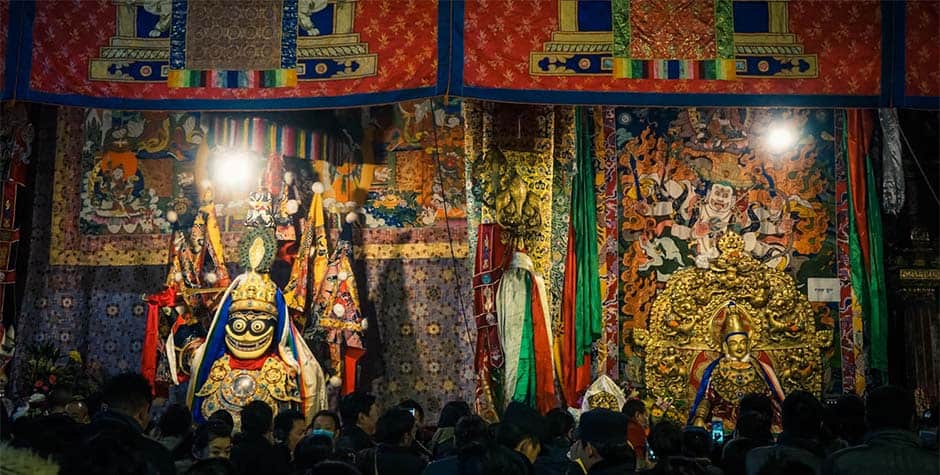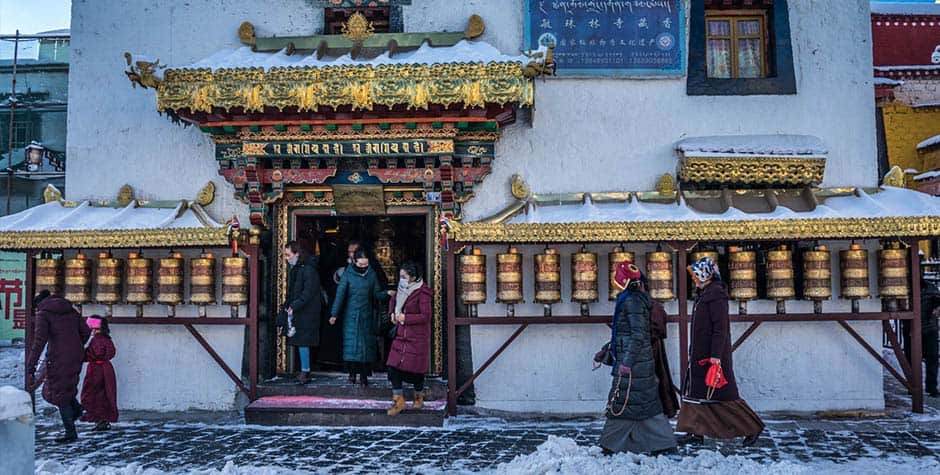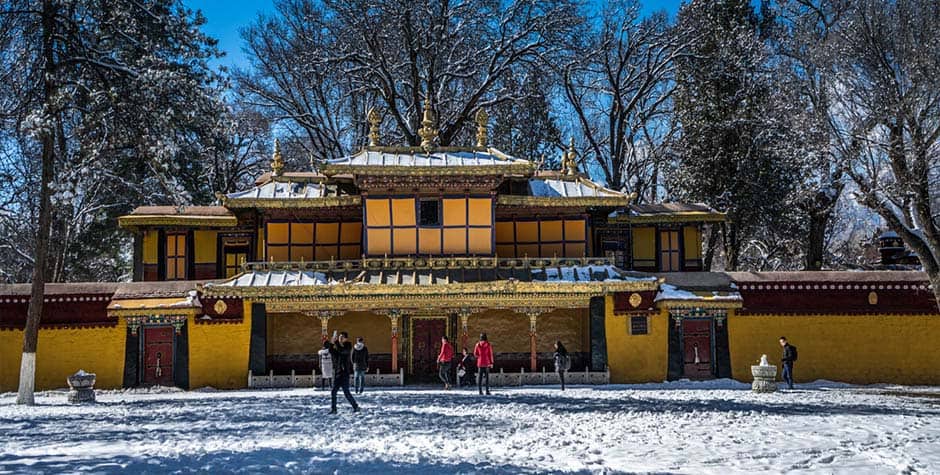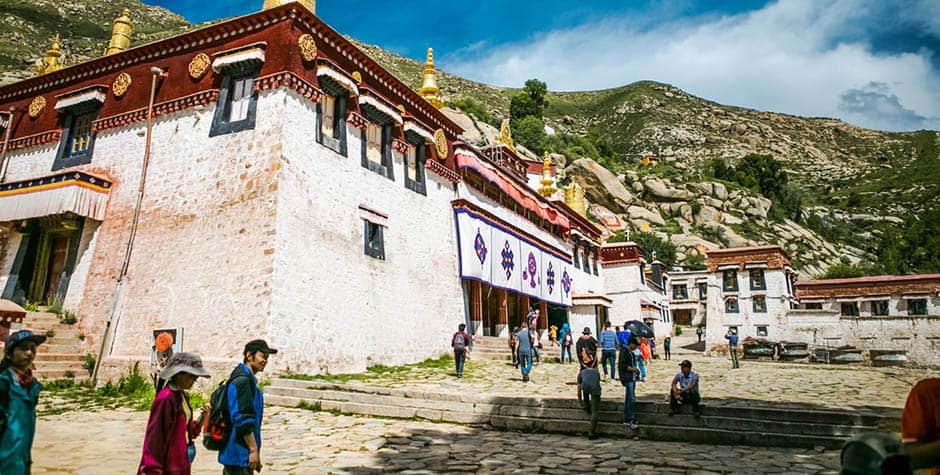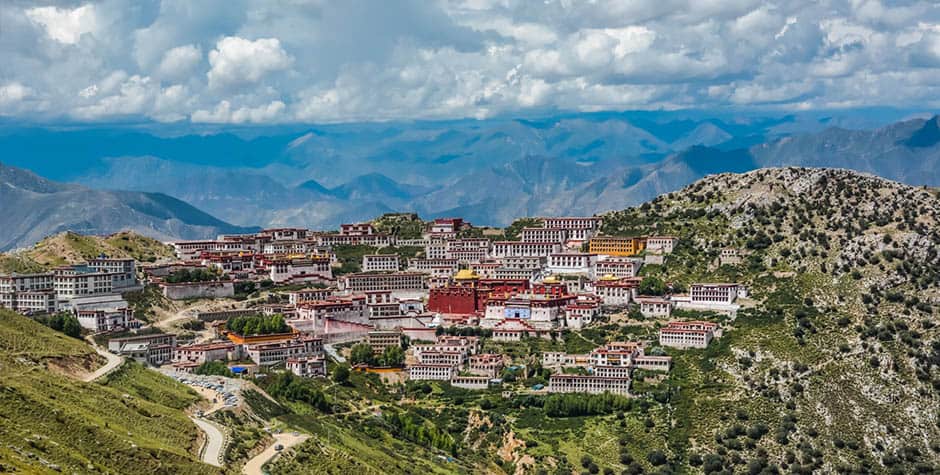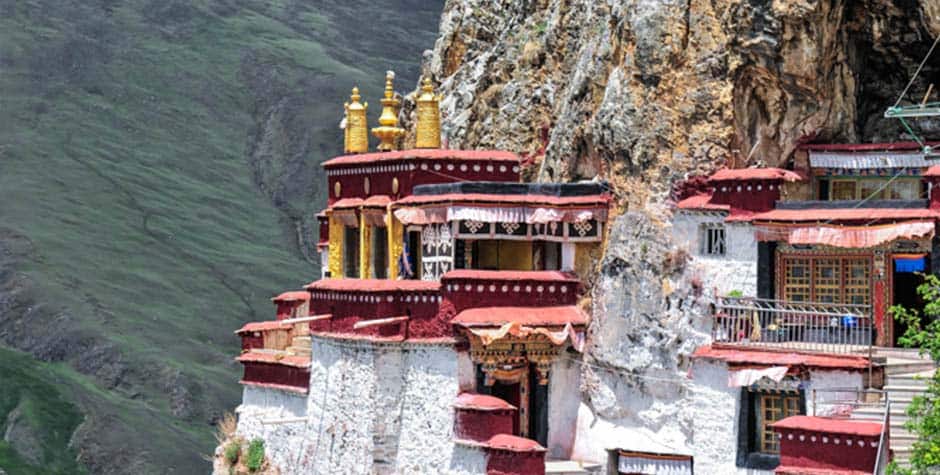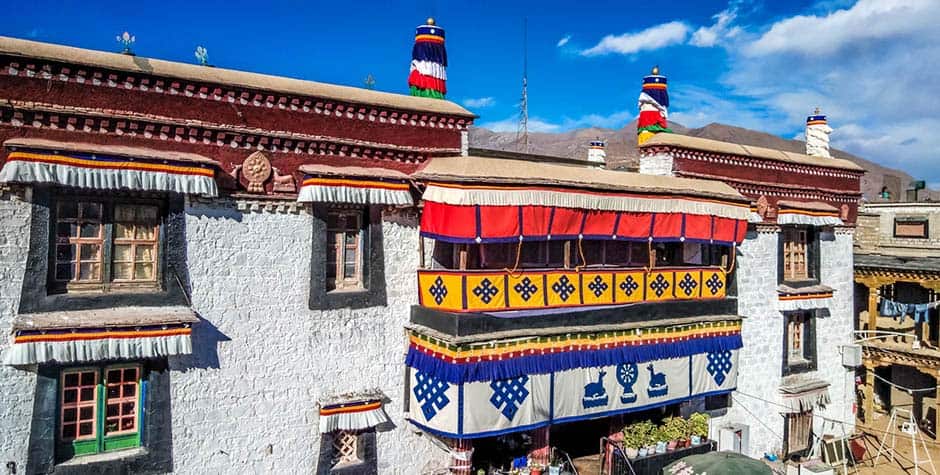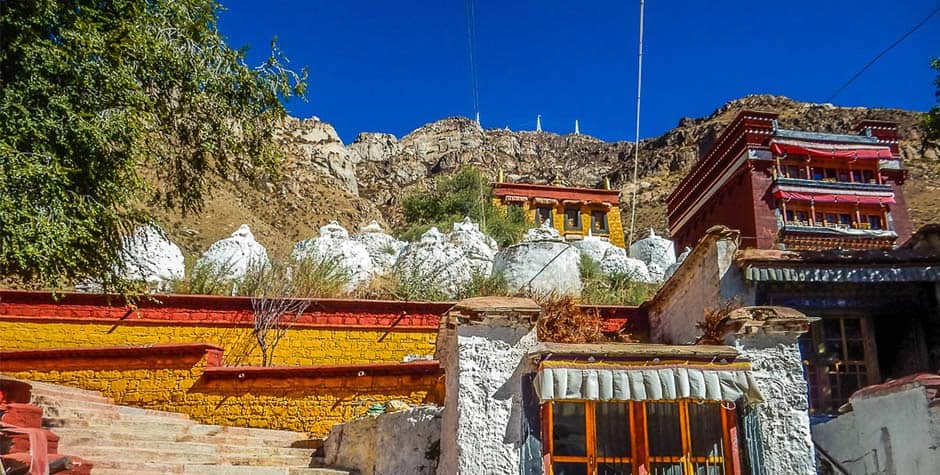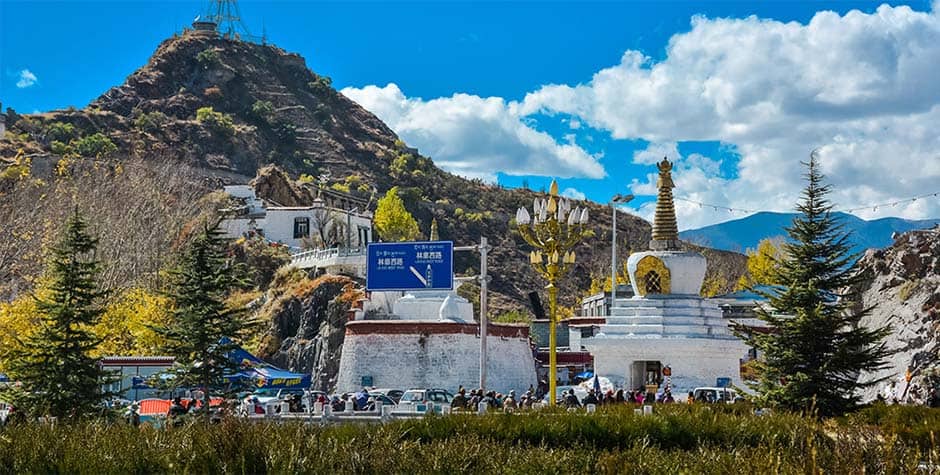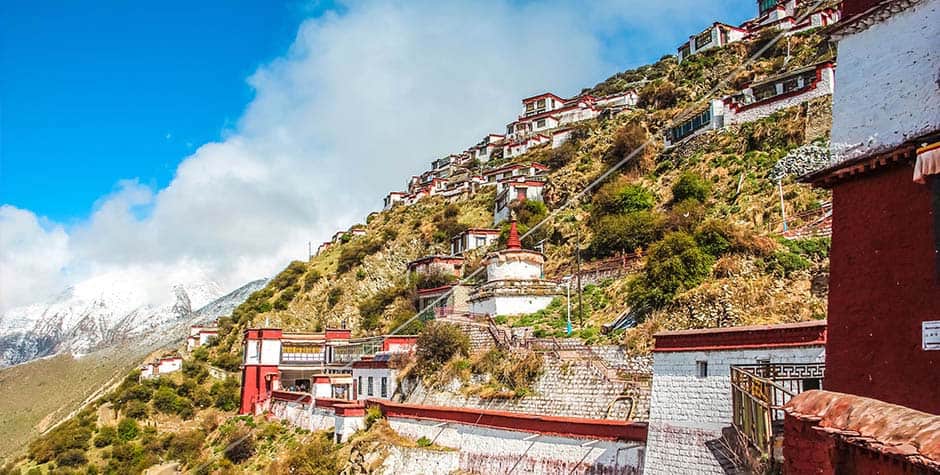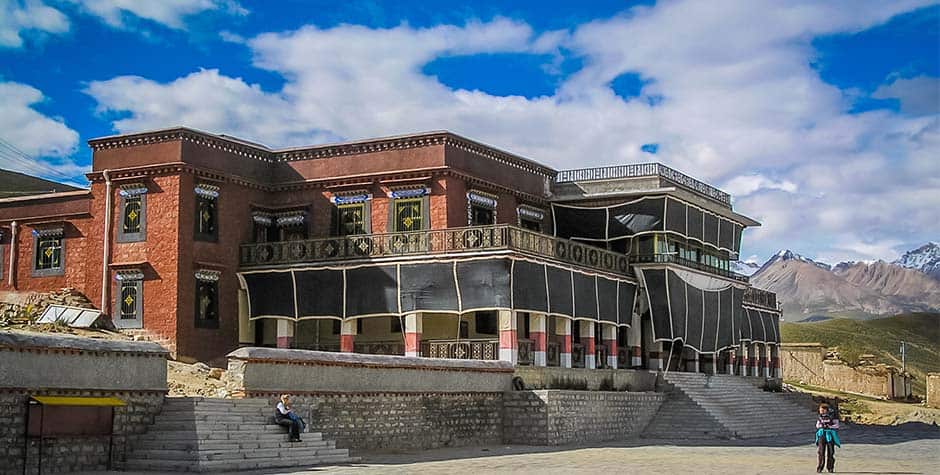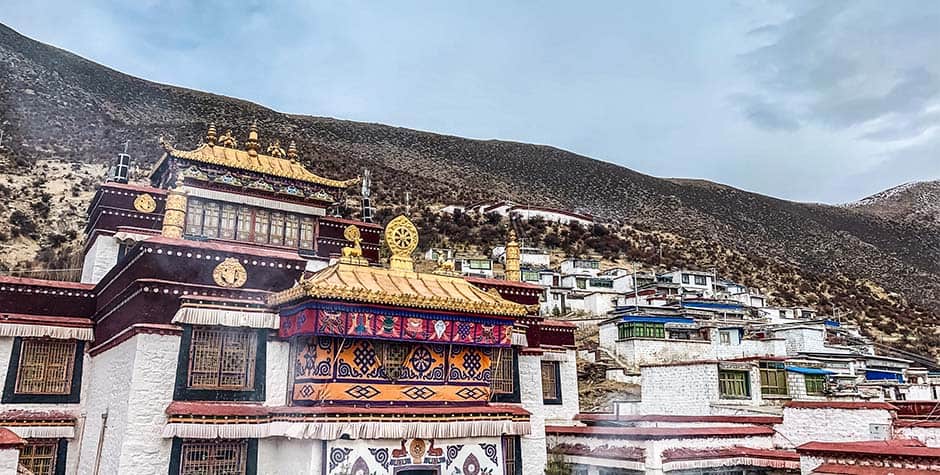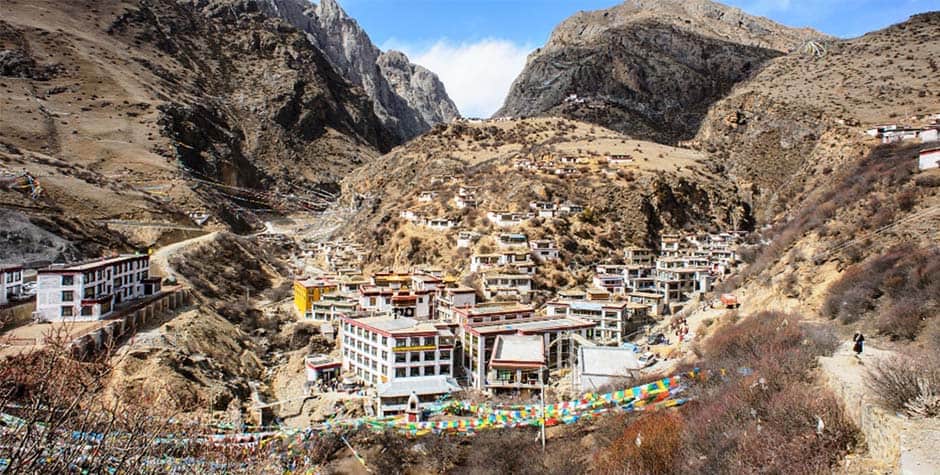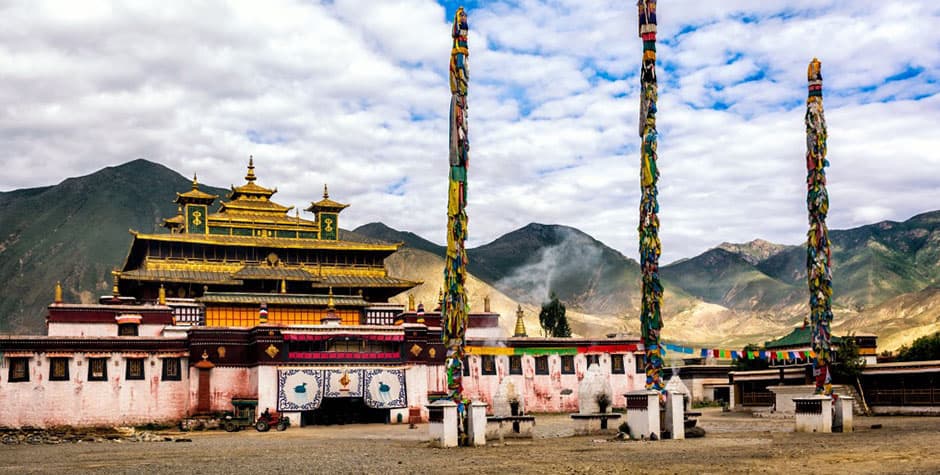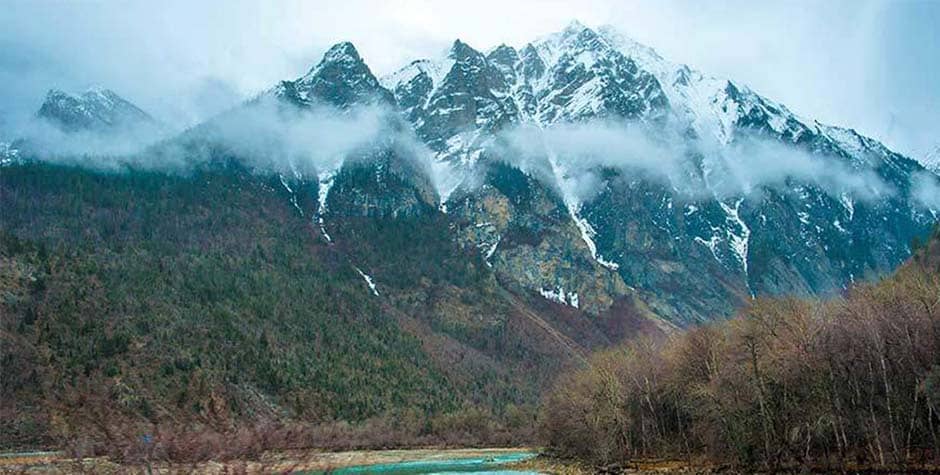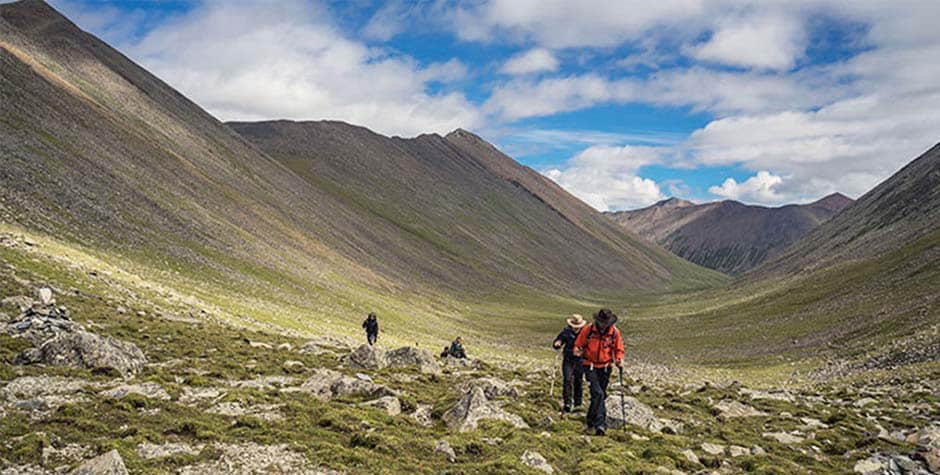The Lhasa Travel Guide provides all the necessary information for visiting Lhasa, including the city and its surrounding prefecture. Here, we have all the Attractions, Hotels, and Tibet Travel permit information you will need to know before visiting Tibet.
Lhasa means Place of God. Lhasa prefecture is the area around Lhasa city. It comprises the Northern Tibetan Highland, the Valley of Lhasa, and the Valley of Drigung. The Namtso Lake is the Largest in Lhasa Prefecture, and the Nyenchen Tanglha Range is the highest point in the prefecture. It covers 29,274 square kilometers of sparsely populated and rugged terrain.
The city serves as the administrative center of the Local Government of Tibet and is an economic hub. The city is home to numerous major travel agencies and international hotels. The Tibet Travel Permit is issuedp by the Tibet Tourism Development Bureau.
The river valley area supports agriculture with crops like barley, wheat, and Vegetables and the highland areas with its northern grasslands supports nomadic economy for grazing yaks, sheep, and goats. Wildlife in the prefecture is rare but includes the snow leopard and black-necked crane. Lhasa city is the central city of the prefecture.
Lhasa information you need to know about attractions, Hotels, and Tibet travel permits. The main attractions include the Potala Palace, Jokhang Temple, Drepung Monastery, and Namtso Lake. Hence, a Tibetan Travel Agency in Tibet is located in Lhasa.
Please scroll down for more on the Lhasa Travel Guide.
Gallery
Travel Tips to Lhasa Prefecture
Getting to Lhasa
Lhasa is the gateway to Tibet and the starting point of most tours in Tibet. You can visit it via a train ride from Other provinces of China, and you can take flights from other areas of China. The Kathmandu to Lhasa Flight is the only international flight in Tibet.
Train to Lhasa
Every day, there are six to seven trains to Lhasa from all the major gateway cities in China, including Xining, Chengdu, Chongqing, Xi’an, Shanghai, Guangzhou, and Beijing. While most train rides take approximately three days for the journey, the train from Xining to Lhasa takes only 24 hours.
There are 30 different daily flights from other parts of China to Tibet and two daily flights from Kathmandu to Lhasa. The flights are coming in from Chengdu, Beijing, Shanghai, Xi’an, Xining, Shangri-La, Chongqing, and Guangzhou to Tibet. Most flights are available from Chengdu to Lhasa.
High Altitude Sickness and Elevation
Lhasa city is situated at an elevation of 3,656 m above sea level, making it one of the highest cities in Tibet. At the same time, the average elevation of Tibet as a whole is approximately 4,500 m. We also have some areas located at lower elevations than Lhasa city, such as the Tsedang and Nyintri areas.
It is common for travelers to experience high-altitude sickness upon arrival in Lhasa. It might take a day or days to acclimate to Lhasa. For some, it can be severe, while for others, it may cause a slight breathlessness while climbing the stairs.
The most responsible travel agency in Lhasa would start all tours from Lhasa, as it allows for a few days in Lhasa city to acclimatize before moving to higher elevations. The majority of trips to Tibet will include three days in Lhasa to visit the city’s sights in addition to the acclimatization process. We provide Oxygen cylinders in the hotel room in an emergency and 24/7 assistance from the hotel staff and us (the travel agency). You can always call us if you need help.
We recommend that visitors leave Lhasa only after they have properly acclimated to the altitude. The city boasts the best medical facilities in Tibet and the most efficient transportation system for evacuation purposes, which is why it is best to stay in Lhasa until proper acclimatization is achieved.
There are many locally produced Medicines for high elevation, including some local Tibetan Medicines. However, we always recommend that all our clients consult their doctors about plans to visit Tibet and bring their own Medicine. We’d like to suggest the same to you.
Tibet Travel Permit for Lhasa Prefecture
We will handle all the necessary travel permits for Tibet, specifically for Lhasa Prefecture, if you would like to learn more about the permit requirements for this area. Here is the information.
If you are visiting the Lhasa prefecture, the only Permit required is the primary Tibet Travel Permit. It usually takes about 12 days to get a Tibet Travel permit. You will not require any additional permits to visit any regions in this prefecture if you plan to travel further into other areas of Tibet. We will need to apply for an additional license at the location of your visit during your travel to Tibet.
But you must keep in mind that the permit situation is different, as per the mode of transportation into Tibet as follows:
- Suppose you are taking a train from other cities in China besides Chongqing. You have only required a photocopy of your Tibet permit. Hence, we will send you a copy by email, and you can make the printout.
- For the train from Chongqing to Lhasa. The Train station in Chongqing will need you to present your original Permit. For this, we will have to send you the original Permit to your hotel in Chongqing.
- Taking a flight to Tibet from any part of China, we will need to send your Original Tibet travel permit. Any airport in China will require you to see your original Tibet travel permit before boarding the flight.
- The Permit will be provided at the border by your tour guide for all travelers coming from Kathmandu to Tibet. If you are taking the overland journey from Nepal to Tibet, your guide will be at the China customs at the border port with a permit. For the flight from Kathmandu to Lhasa, your tour guide will meet you at the China Customs counter in Lhasa Airport, holding the Permit.
Scroll down for more Lhasa Travel Guide.
Weather / Best Time
The Lhasa prefecture valleys are roughly at an altitude of 3,610 meters. The central river valleys are warm in summer, and even during the coldest winter months, the temperature remains above freezing on sunny days. The climate is semi-arid, characterized by a monsoon pattern, with an average temperature ranging from 1.2 to 7.5 °C (34.2 to 45.5 °F). The average annual precipitation is 466.3 millimeters, with 85% of the precipitation falling between June and September. Typically, there are 3,000 hours of sunshine each year. The climate is generally colder in the northern regions and warmer in the south.
LHASA WEATHERBest times to visit.
Tof the he best time to visit Lhasa Prefecture is from April to mid-June and from September to November. During those days, it is warmer, and no rainfall on average.
Suppose you would like to enjoy Tibet without many tourists. Winter is an ideal time to visit Lhasa.
Scroll down for more Lhasa Travel Guide.
Where to Stay
Boutique Hotels in Lhasa Prefecture
Tibetan Mid Range Hotels in Lhasa Prefecture

Yak Hotel
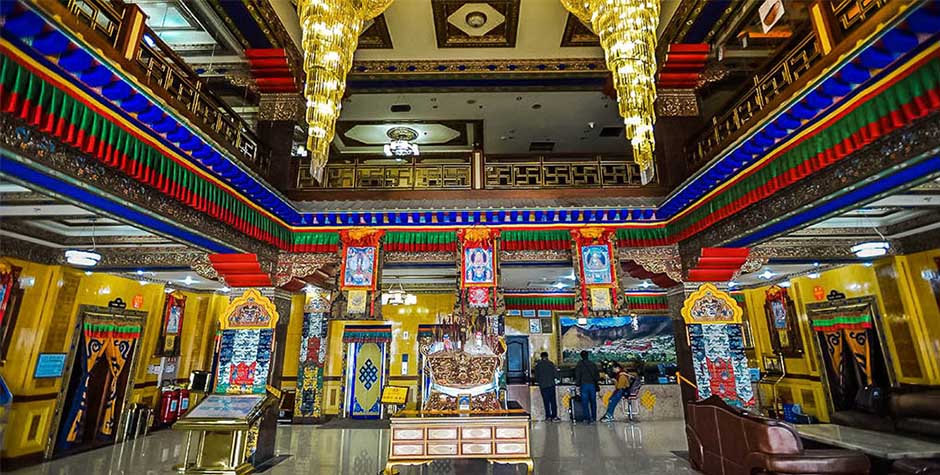
Gang-Gyan Hotel

Ramoche Grand Hotel
Five Star Hotels in Lhasa Prefecture
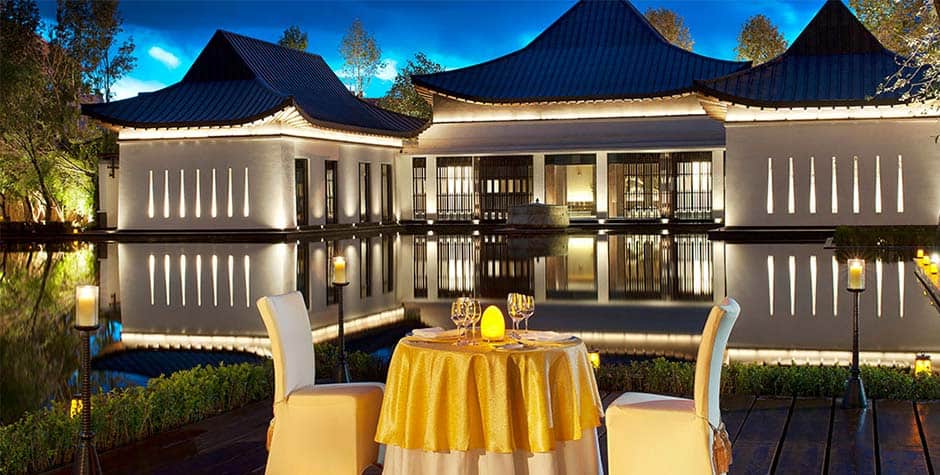
St. Regis
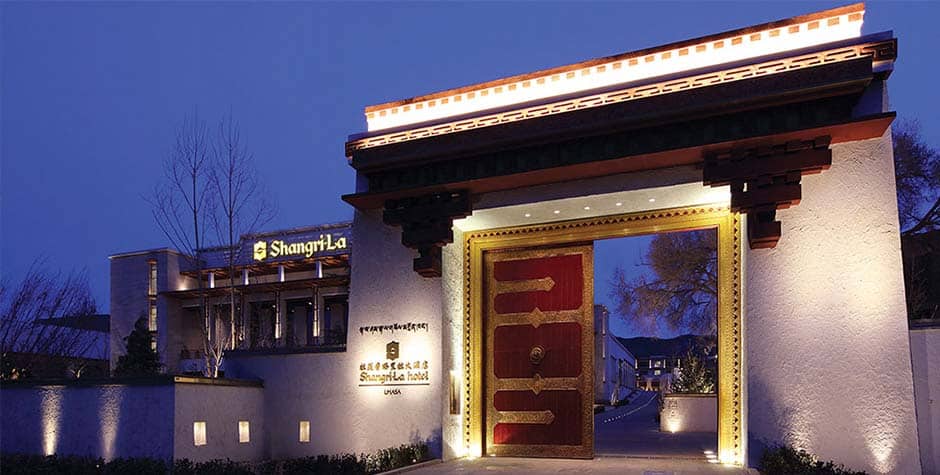
Shangri-La
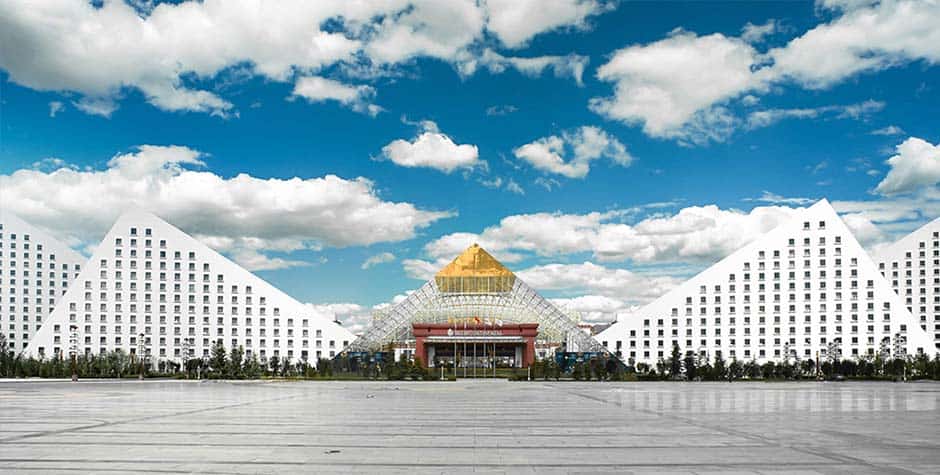
Intercontinental
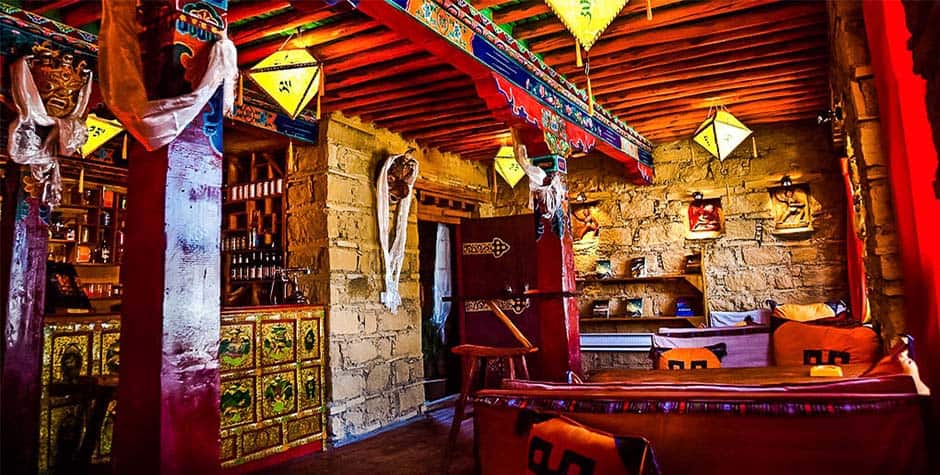
House of Shambhala Restaurant

Tashi no 1

Kyichu Restaurant
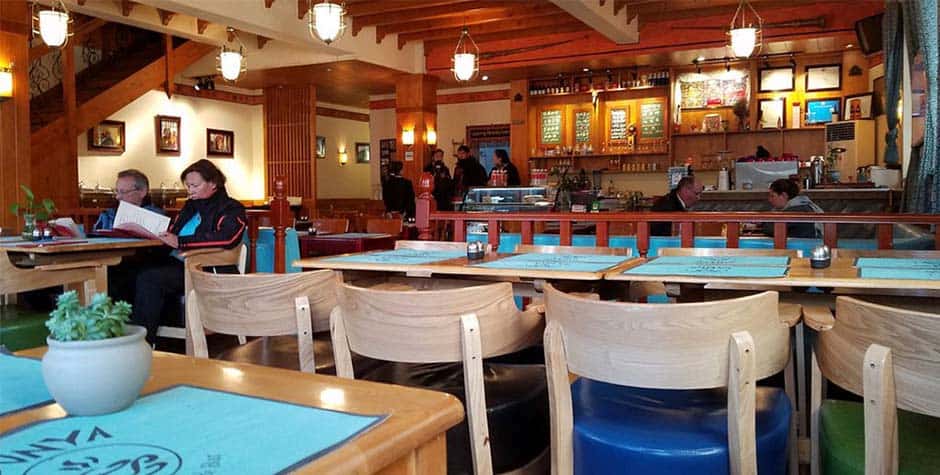
Dunya Restaurant

Lamo-Tsang
Cafe in Lhasa
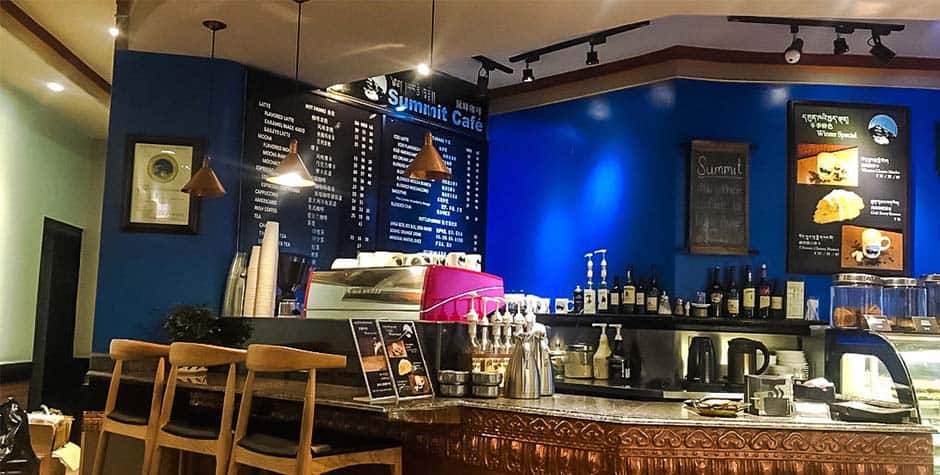
Summit Cafe

Gamqiong Teahouse
Packing List
Clothing
- Comfortable, broken-in hiking shoes or hiking boots with Spare laces
- 3 or 4 pairs of hiking pants ( at least 1 pair of waterproof/windproof hiking pants
- *1 pair of comfortable tennis shoes, flip-flops or croc-style sandal to wear
- 2 or 3 pairs of cotton socks
- 3 or 4 pairs of wool socks
- 4 to 6 pairs of underwear (*trekker should bring some spandex or non-chaffing underwear)
- 1or 2 sets of thermal underwear (tops and bottoms)
- 1 set of warm pajamas for overnight
- Mid-weight or heavyweight winter coat ( down recommend for treks and any Tibet Travel in the month from October to April)
- Lightweight hooded rain jacket for treks and any travel done from April thru October
- Warm Hat
- Warm gloves
- Scarf (Optional)
- Sun Hat with the wide brim
- 2 or 3 fleece tops
- 4 to 5 T-shirt (Mixture of short and long sleeved. *Wicking shirt should be used for treks.)
Accessories
- *1 lightweight, quick0drying towel
- *Gaiter (optional for trekkers)
- *bandana (optional for trekkers)
- *mid to heavyweight sleeping bag of -12°C to -18°C (10°F to 0°F)
- Sunglass with UV Protection
- Protection small flashlight (torch) or headlamp with extra batteries
- 1 liter Nalgene bottle
- Small thermos for tea/hot water
- *day pack that is 30L to 40L in size ( Only if you are trekking)
- *2 durable trekking poles ( Only if you are trekking)
- 1 or 2 small plastic bags for dirty clothes, etc
- Personal Hygiene and Toiletry items
- Sunblock/ Sunscreen that is SPF 35 or higher
- Lip balm that contains sunscreen
- Skin moisturizer (optional)
- Anti-Bacterial hand sanitizer
- Small hand-held mirror (Optional)
- Deodorant
- Feminine products
- Shaving products
- Travel size Soap and Shampoo
- Toothbrush and toothpaste
- Wet wipes
- 2 to 3 rolls of toilet papers
- Nail clipper
- Band-Aid and moleskin for blisters
- Earplugs
- Cotton buds/Q-tips
Medicines
- Medicine to treat travelers Diarrhea
- Anti-biotic ointment for minor cut or blisters
- Personal Tylenol, ibuprofen, cold medicine, antihistamine, etc
- Diamox / Acetazolamide (Optional….contact your doctor for details)
- Medicine if you are prone to motion sickness (optional)
- prescription drugs (contact your doctor)
Extras
- iPod/iPad/Kindle(optional)
- Batteries for personal items (Camera, Flashlight, etc)
- plenty of memory cards for your camera
- passport/ money holder
- extra copy of your passport and Chinese Visa (Make an Extra copy of your travel permit in Tibet)
- Protein bars, Chocolate, dried fruit or Other snacks of your choice.
- Electric outlet adapter for China
- Small notebook with pen
- 3 to 4 small zip-lock bags
Places to visit in Lhasa Prefecture
Our Special Arrangments
For maximum exposure to Tibetan Culture, religion, history, and crafts. We have extensive special arrangements to give you good cultural and traditional experiences. Read more about Tibet Travel and Tibet Tours. Please visit our blog: Nomadictibet.com
Conclusions of Lhasa Travel Guide
Here, we have made out best effort to give all the information about Lhasa travel guide. If you have any questions or you would like more information about Lhasa Travel guide. Please email us and we will surely come back to you with better informations. For find more information about Tibet Travel here.
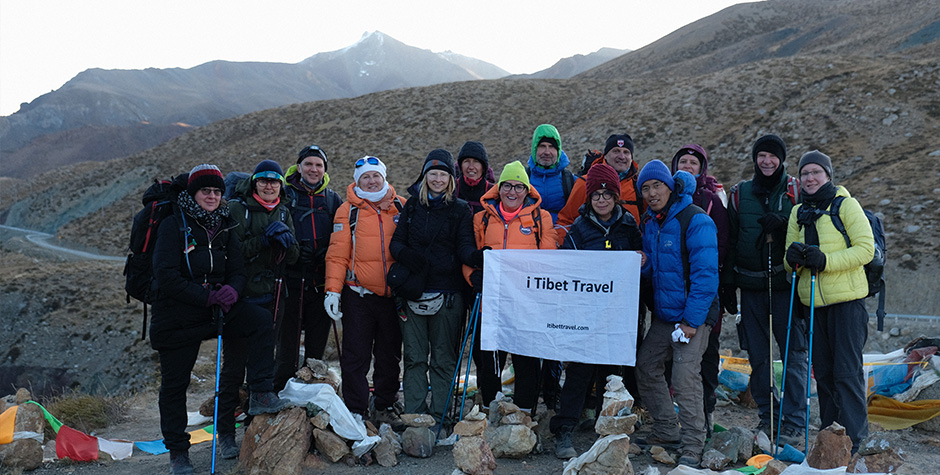
Tenzin Travel is the best Tibetan Travel agency in Tibet. Our agency is one of Tibet’s most experienced tour operators, with over 20 years in the industry. Founded by a local Tibetan family with decades of expertise as guides, managers, and route planners. We craft personalized itineraries for every traveler. Our agency is the highest-rated and most recommended Tibet travel agency on TripAdvisor, Google, and Lonely Planet.
We can make holistic arrangements for your trip to Tibet. Including a Tibet Travel Permit, a Tibetan tour guide, flight tickets, train tickets, vehicle arrangements, and hotel bookings in Tibet.
Our Lhasa office is just steps from Barkhor Square. All our Tibetan team ensures deep cultural, linguistic, and religious insights, setting us apart from other agencies.
Beyond tourism, we support Tibetan communities by donating a portion of each tour to local projects. Your travel to Tibet is about more than profit—it’s about the opportunity for us to give back.

